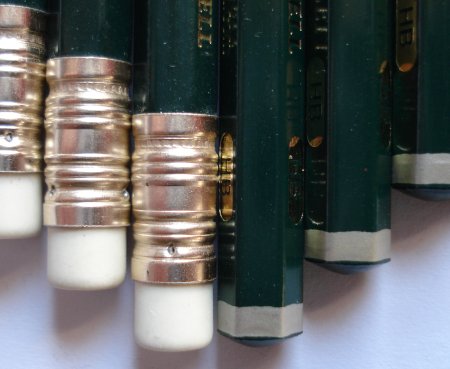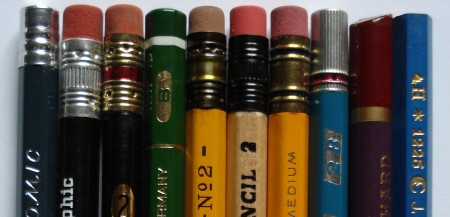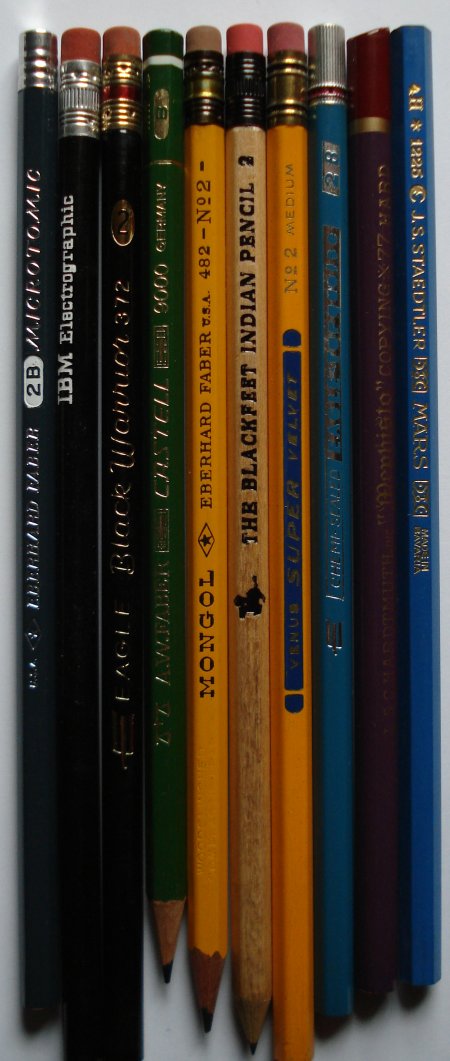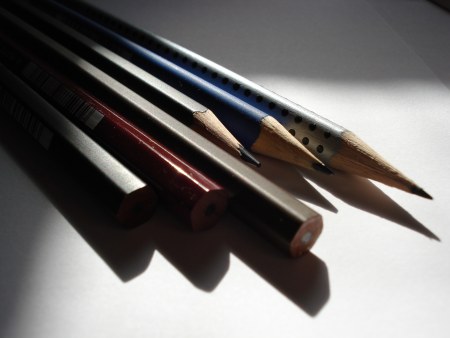
Following our first poll on pre-sharpened pencils, we consider the question of pencils being sold with attached erasers.
The manufacturer lineup is a bit different than on the sharpened/unsharpened question. American manufacturers tend to be the ones generally offering pencils with erasers. But exceptions abound – the photo shows the famous Faber-Castell 9000 in both traditional and eraser attached versions. Japanese manufacturers do make at least novelty pencils with erasers.
There are some potential problems with attached erasers. The eraser isn’t always the type one would like. The photo shows a white vinyl eraser, but most pencils come with a Pink Pearl style eraser. What if you don’t like the style or type of eraser that comes with your pencil? You are stuck.
The eraser on a pencil tip is also fairly small, and can easily be used up if one does a lot of erasing. The remaining bit of ferrule and eraser stub doesn’t look so appealing, nor is it useful.
The eraser can also harden over time. The erasers on many older pencils are dried up, even though the pencil is still otherwise in great condition. Some ferrules can also rust over time.
Note: The Kita-Boshi Wood Note pencil and Graf von Faber-Castell Perfect Pencil are both exceptions. They were designed to allow eraser replacement:

As well, consider the manufacturer’s dilemma – a first rate pencil (the core of the business) could be diminished in the marketplace by a second rate eraser.
On the plus side, the attached eraser can be an immense convenience. One single object to hold and use is the ideal.
It is also what some may consider to be an intrinsic part of the pencil experience. It just “feels right” for many.
This mode of usage continues in modern touch screen devices. I attended a lecture where the speaker had a touch sensitive tablet, and wrote on it with a stylus. The tablet screen was projected onto a large cinema-style screen so that the audience could observe. To edit a diagram, the speaker turned the stylus upside down and “erased” previous markings. The well known interface of pencil erasing was carried on in a paper-less, pencil-less format.
So what do you prefer, and more importantly, why? Feel free to leave a comment as well as vote in this poll.
{democracy:2}







